LIA-JoULE activities
LIA-JoULE activities in LSM are linked with all experiments conducted in it. In particular with:
NEM03 dedicated to double beta decay investigation and search for the 0νßß-decay;
SuperNEMO further development of 0νßß-decay search on an unprecedented level of sensitivity;
EDELWEISS-IIIs dedicated to direct search for non-baryonic dark matter;
TGV dedicated to search for double beta decay processes (ß+ß+, ß+EC, EC/EC) of 106Cd;
SPT dedicated to search for EC/EC in 106Cd using Si pixel detectors.
SHIN dedicated to search for the presence of super heavy elements in nature.
NEMO3 experiment (Official web page)
The NEMO3 (Neutrino Ettore Majorana Observatory) experiment was dedicated to investigate the neutrinoless double beta (0νßß) decay. For this goal, the experiment combines two detection techniques: calorimetry and tracking. Such approach allows us at the same time unambiguous identification of e−, e+, γ, and α-particles provided by a wire tracking chamber and energy and time measurements of particles with a calorimeter. The observation of such a process would provide fundamental information about neutrinos, i.e. their absolute mass scale, their inner nature concerning the matter/antimatter asymmetry (Majorana/Dirac particles) or even evidence for supersymmetry. The NEMO collaboration has been working on this topic since 1989. Two prototype detectors (NEMO1 and NEMO2) have been built and used until 1997. From 1994 to 2001, the NEMO collaboration has been involved in the design and construction of a large and very-low radioactive background detector - the NEMO3.
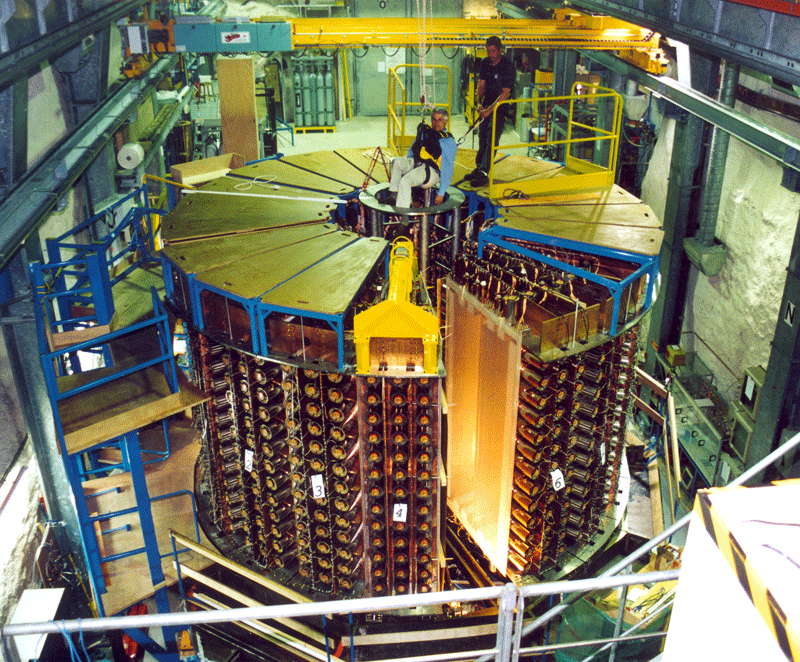 |
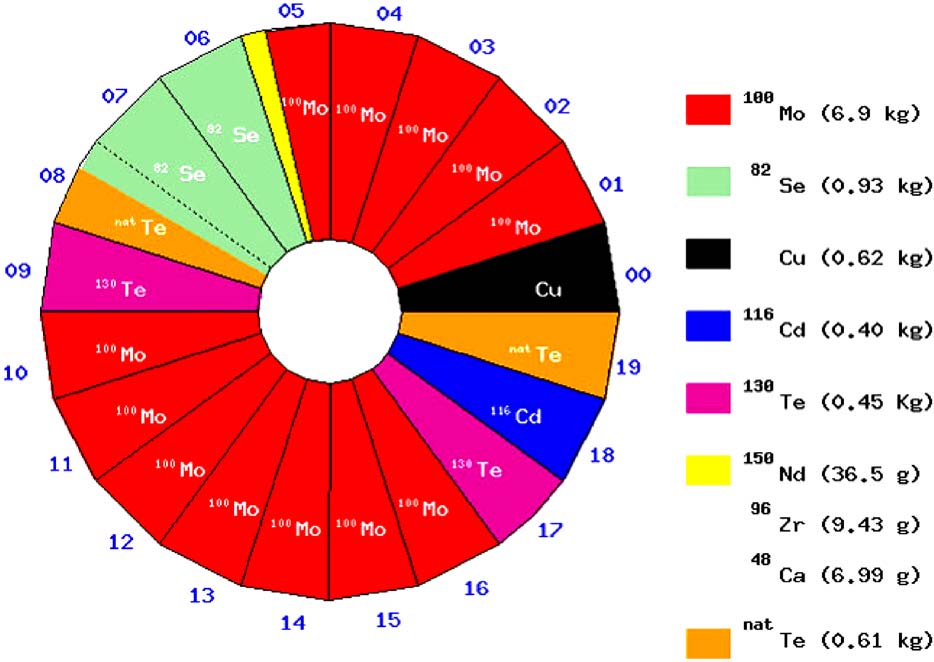 |
Its performances enabled the observation of double beta decay processes with lifetime at the sensitivity of 1024 years. Data taking officially started in January 2003 and finished in January 2011. The analysis is still ongoing until the publication of all results.
The NEMO2 and NEMO3 detectors produced measurements for two-neutrino double beta decay and limits for neutrinoless double beta decay for a number of elements, such as 100Mo, 82Se, 116Cd, 130Te, 150Nd, 96Zr and 48Ca.
SuperNEMO experiment (Official web page)
SuperNEMO is a next generation experiment to search for the neutrinoless double beta decay based on the successful NEMO3 experiment. The aim of the SuperNEMO experiment is to increase the sensitivity, compared with current experiments, to the absolute Majorana neutrino mass by two orders of magnitude (1026 years). The SuperNEMO approach aims to measure the complete topological signature of the process (two electrons emitted from the same vertex with the summed energy of the double beta decay transition). This will allow for the extremely efficient background suppression needed for the discovery of 0νßß-decay. SuperNEMO will also be in the unique position to identify and study the specific mechanism responsible for 0νßß-decay (e.g. right-handed current admixture in weak interaction versus supersymmetry etc). SuperNEMO is also the only experiment of this type that can use many isotopes and therefore it could provide the necessary cross-check to confirm the observations found by an alternative techniques.
The SuperNEMO demonstrator is based on technology used by the NEMO3 detector. The SuperNEMO detector will consist of 20 identical modules each containing approximately 5 kg of enriched double beta decay emitting isotope in the form of a thin foil. The installation of a first module (using 82Se) in the LSM is currently under construction, with data taking expected beginning of 2017.
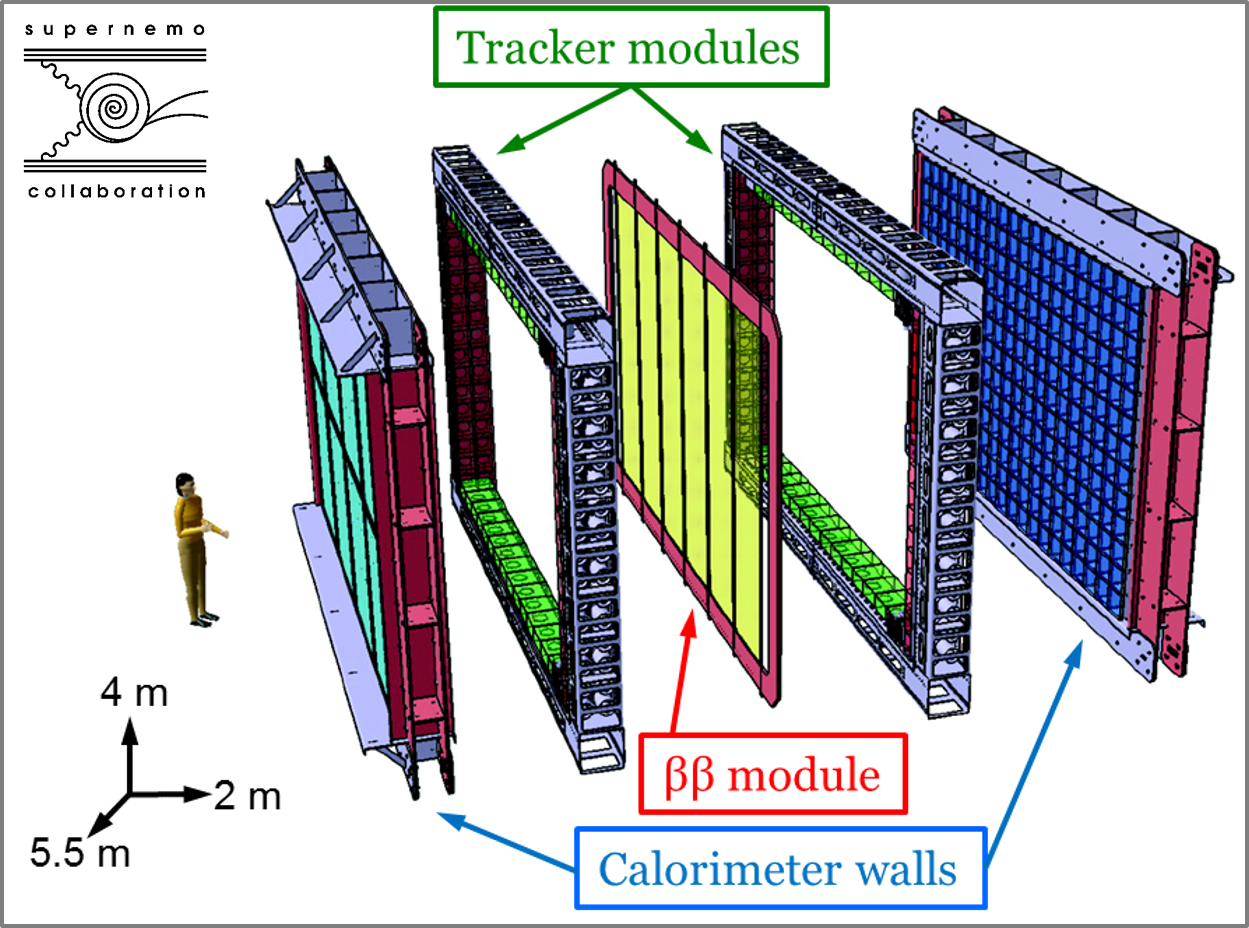
EDELWEISS-III (Official web page)
The EDELWEISS program searches for evidence of direct WIMPs (Weakly Interacting Massive Particles) from Milky Way galaxy scattering of Ge nuclei within cryogenic Ge crystals. The EDELWEISS detectors are cryogenic (work temperature is about 20 mK) Ge bolometers with simultaneous measurement of phonon and ionization signals. The comparison of the two signals provides a highly efficient event-by-event discrimination between nuclear recoils (induced by WIMP and also by neutron scattering) and electrons. The experiment is located in the LSM laboratory to reject background caused by cosmic radiation. To go beyond the present EDELWEISS sensitivity and to be competitive with other experiments, a third phase (EDELWEISS-III) of the experiment is foreseen. The EDELWEISS-III project consists in an upgrade of both the current EDELWEISS setup and detectors. Thus, in 2013, the EDELWEISS collaboration main work’s direction was testing and calibration of newly installed detectors with an active rejection of the surface background. New 800 g FID (Full InterDigit) detectors with significantly increased fiducial volume were commissioned in a few months run for its applicability in EDELWEISS. Together with new detectors whole experimental setup has been updated in 2013, improvements were related to cryogenic system, shielding, new fast data acquisition.
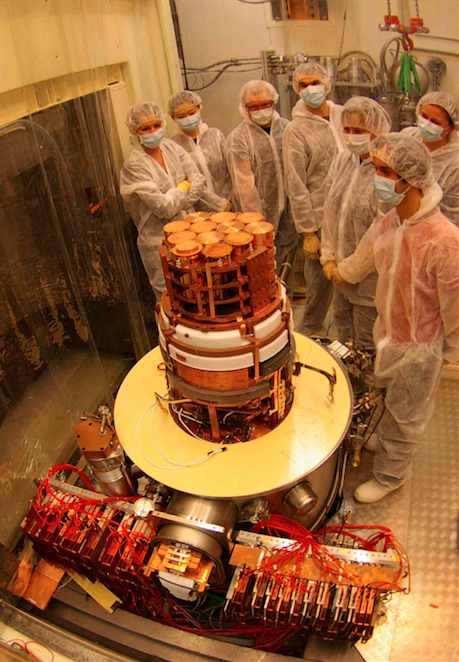
TGV experiment
TGV (Telescope Germanium Vertical) is the measurement of double beta decay of 48Ca and 106Cd. The TGV collaboration (IEAP CTU, JINR Dubna, CSNSM Orsay, CU in Bratislava, NPI CAS) has been interested in experimental investigation of the ββ decay for several years. The collaboration measured half-live of two-neutrino double beta decay of 48Ca isotope with the TGV I detector. Based on the experience with the spectrometer TGV I, the more efficient low-background spectrometer TGV II was constructed. The most important feature of the TGV II is its ability to study small amount of materials with high efficiency (especially samples made of isotopes available only in small quantities, e.g. 106Cd). At present the collaboration TGV is devoted to the investigation of the two-neutrino double electron capture (2νEC/EC) in 106Cd. The Phase II of this measurement started in December 2007 with appr. 13 g of 106Cd. The result of T1/2 ≥ 3.7 x 1020 years for 2νEC/EC (g.s → g.s) decay of 106Cd has been found after the processing of experimental data obtained after 8 700 hours (1 year) of measuring time. New run (the phase III of the TGV experiment) with 106Cd foils with enrichment of 99.57 % and total mass of ~ 23.2 g was started in February 2014.
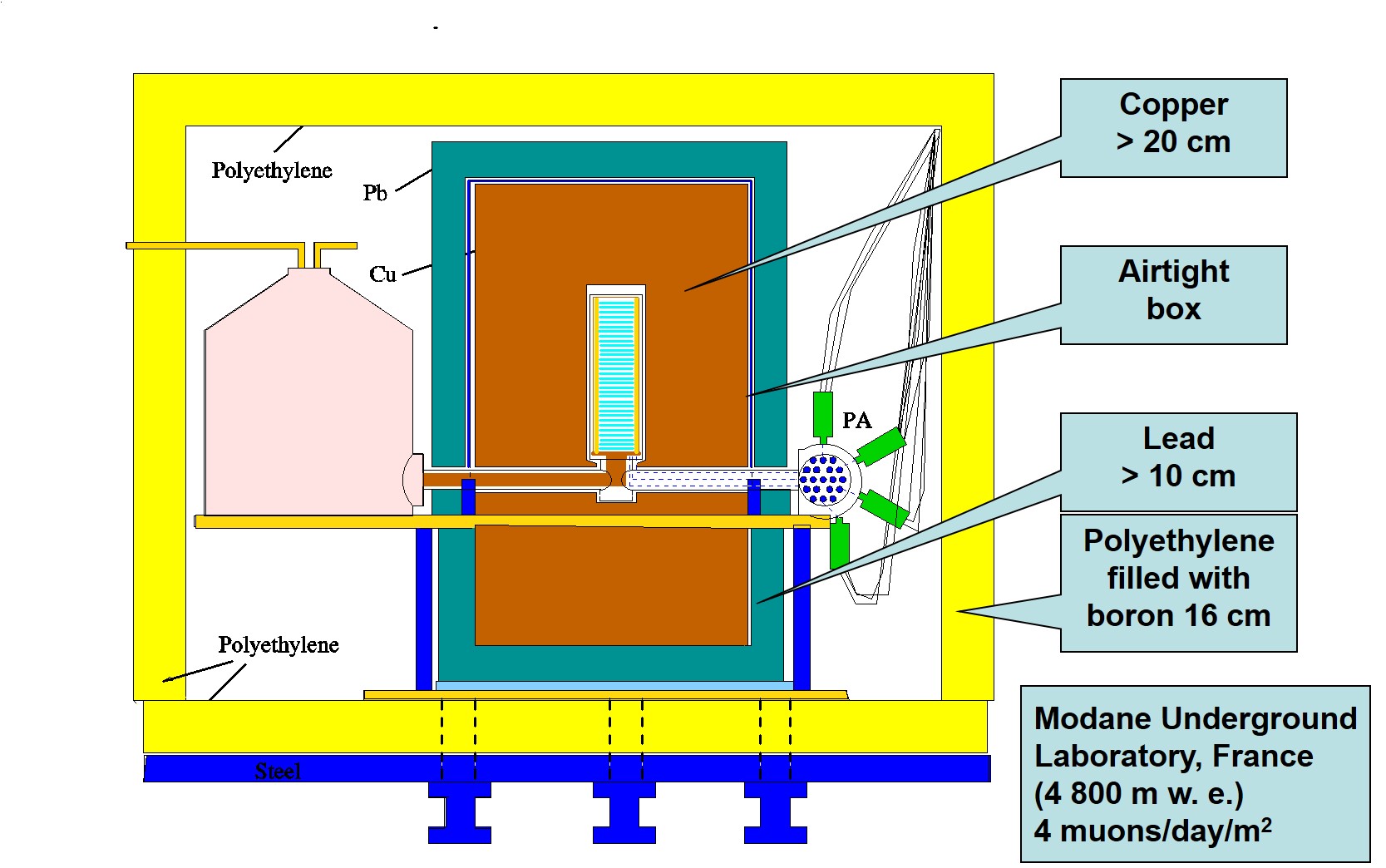 |
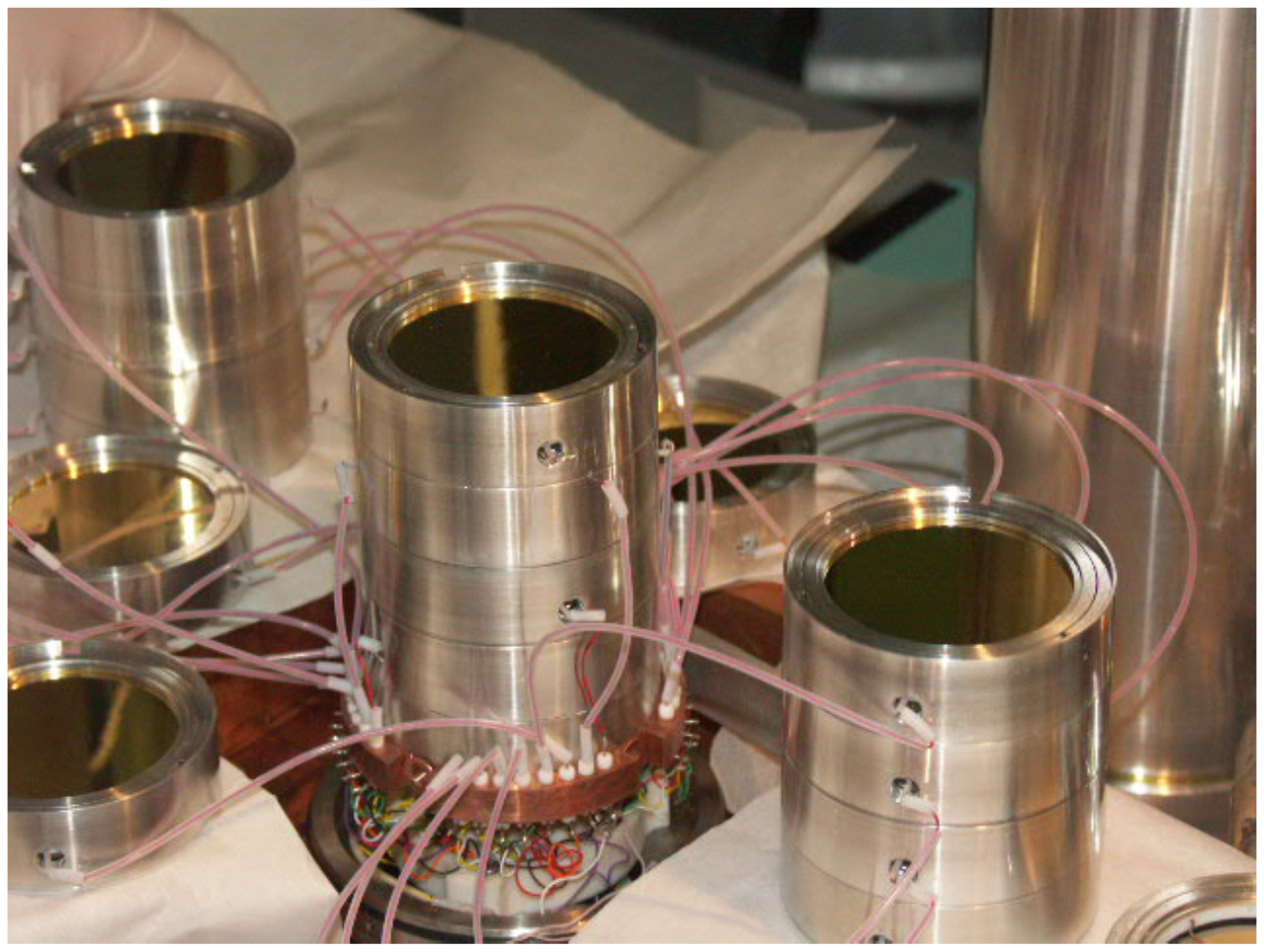 |
SPT experiment
The experiment Silicon Pixel Telescope (SPT) is devoted to the measurement of double electron capture (EC/EC) in 106Cd and application of advanced detection technique, pixel detectors, in double beta decay. Pixel detectors made of Si or CdTe provide the ability to distinguish different types of radiation (alphas, gammas, muons, electrons) due to the shape of track. Group of IEAP CTU in Prague has developed a low background face-to-face stack of pixel detectors, which are gradually being installed in the sophisticated shielding at Underground Laboratory LSM.
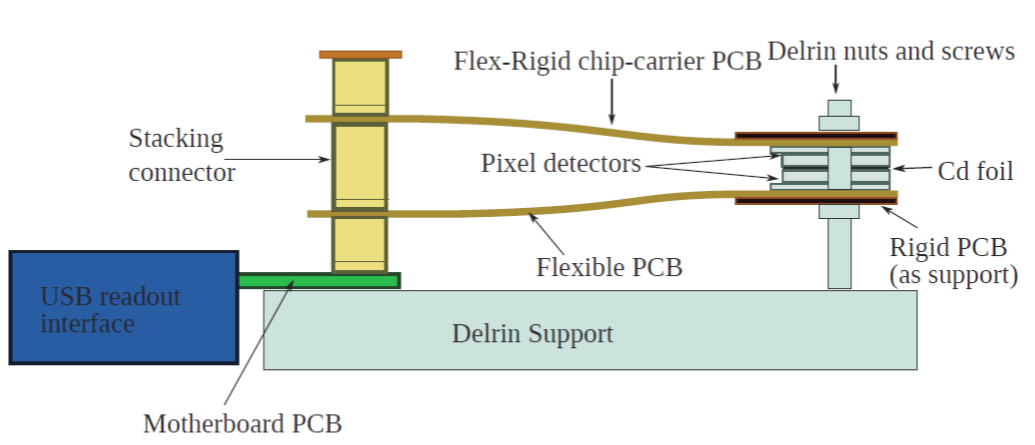 |
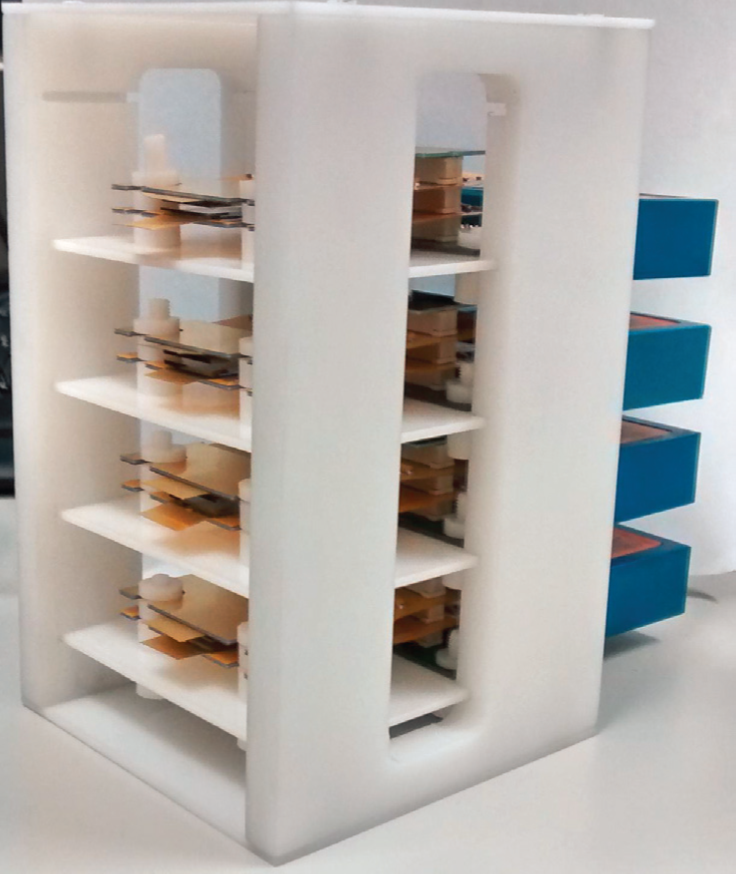 |
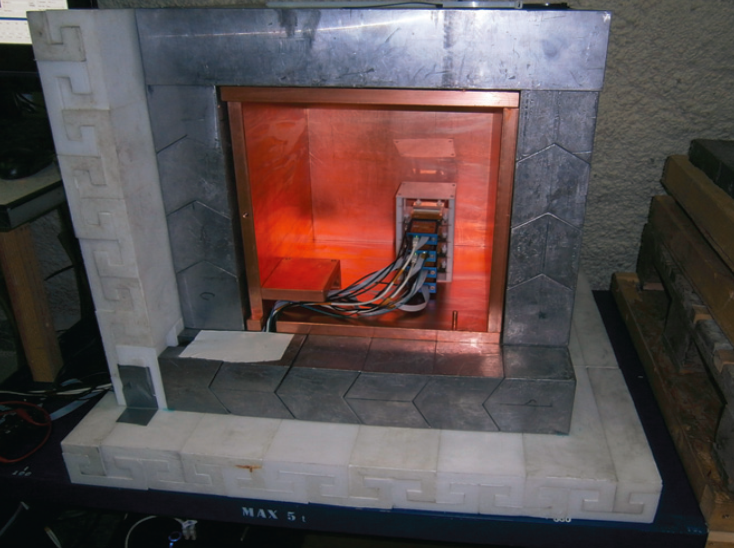 |
SHIN
SHIN experiment (installed in LSM in 2004) is dedicated to search for the presence of Super Heavy elements In Nature. Designed and built by JINR team, this detector is searching for multi neutron production from spontaneous fission of superheavy element 108Os in a 500 g sample. The detector is composed of 60 3He counters in a 50 cm diameter, 1 m long cylinder filled with paraffin. With this setup, a sensitivity to the presence of such element of 10-22 g/g in earth material can be achieved in one year, assuming that its half-life is 109 years.
Other activities
- Gamma Spectroscopy
- Development of ultra low noise Germanium detectors
- Radiobiology
16 ultra sensitive HPGe detectors equipped with germanium crystals with a sensitivity of the order of mBq/kg are used for low radioactivity measurements.
HPGe detector OBELIX
Low background HPGe detector OBELIX produced by Canberra company is based on P-type crystal with the sensitive volume of 600 cm3, the mass of approximately 3 kg, and the efficiency of 160 %. The crystal was mounted in ultra-low background U-type cryostat with a cooled FET (Field Effect Transistor). The energy resolution of the detector is ~ 1.2 keV at 122 keV (57Co) and ~ 2 keV at 1332 keV (60Co). The measured value of Peak to Compton ratio is up to 113. The detector part of the cryostat is surrounded by the passive shielding of several layers of archeological lead (PbI) and low active (PbII) lead and placed inside tightly closed stainless steel cover.
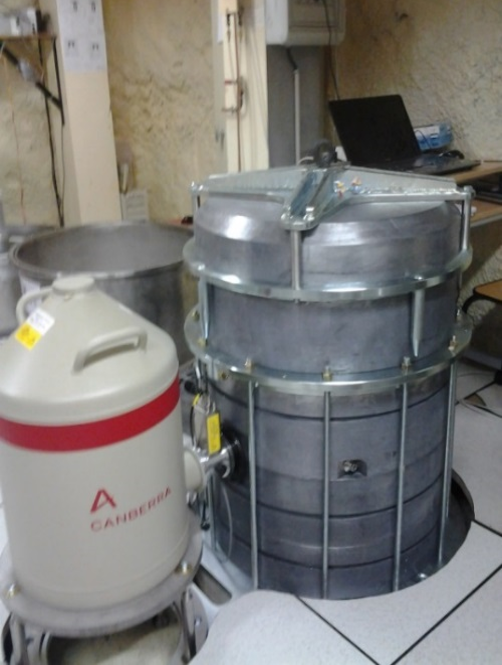 |
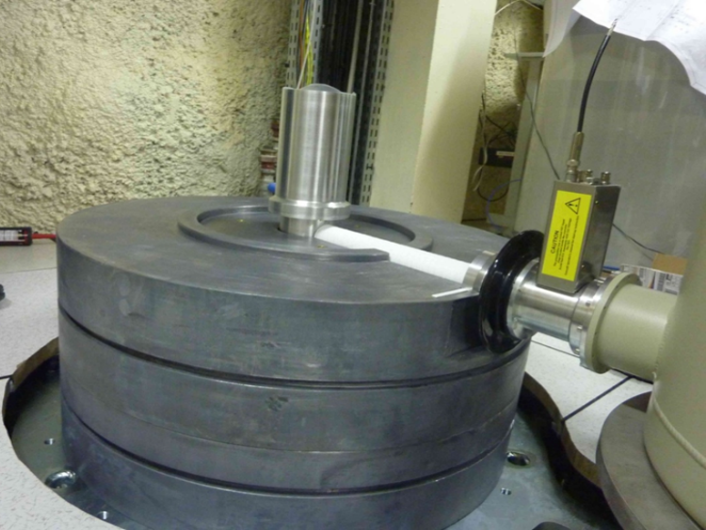 |
Supporting infrastructure
- Anti-radon facility
- Clean room
The suppression of radon plays a crucial role for ultra-low background experiments. In order to reduce the background from Rn the anti-radon facility was installed in LSM in 2004. Radon suppression with anti-radon facility is based on pumping of cooled air through the charcoal and on the adsorption of radon on it. This method allowed to reduce the concentration of radon in the incoming air by a factor of 1 000. The anti-radon facility was designed by the Czech team of the NEMO3 collaboration and built by the Czech company ATEKO.
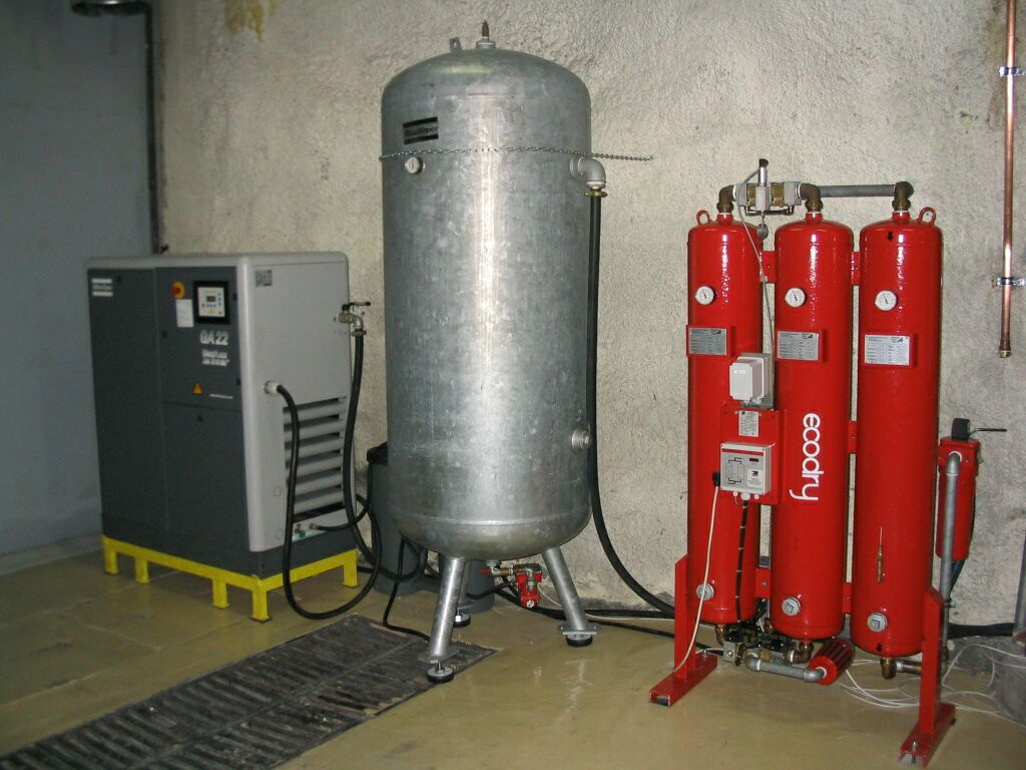 |
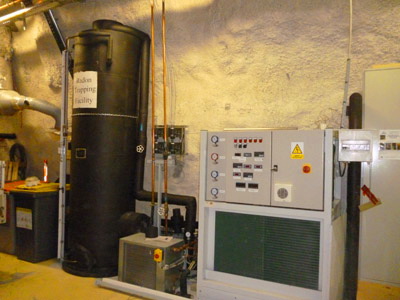 |
The main aim of the proposed project is research and realization of technology for obtaining of clean room on surface conditions with highly suppressed activity caused by radon and clean room in underground laboratory with suppression of all types of ionizing radiation. The results of the project could be used in electronic industry (production of chips with high density), in biology (study of influence of environment without sources of radiation on bacteria or DNA) , measurement of very low internal radioactive contamination of persons (in vivo) and in fundamental physical research (underground experiments such as PICO for detection of Dark matter).
|
|